Financial Planning Tips for Individuals on SSDI and SSI
For those receiving Social Security Disability Insurance (SSDI) or Supplemental Security Income (SSI), effective financial planning is yet another challenge.
A late 2023 report from the Financial Health Network found that one in three working-age individuals with disabilities is considered “financially vulnerable,” struggling to meet expenses and often carrying significant debt. Bear in mind that the CDC’s latest data shows that over 70 million U.S. Adults reported having a disability
This article provides real-life financial planning tips to help individuals on SSDI and SSI manage their benefits, budget effectively, save for the future, and access available government and community resources.
Know Your Benefits
Before you begin planning, it’s essential to understand the difference between SSDI and SSI. SSDI benefits are work-based; your entitlement depends upon your work history and how much you have contributed to Social Security.
On the other hand, SSI is a need-based program that targets low-income people with not enough work history to qualify for SSDI. Both programs provide basic assistance in various manners, with various qualification and benefit differences.
For a more detailed breakdown, Trajector’s easy-to-read Disability Guide explains the different benefit programs, and how you can access the benefits you’re eligible for.
Here are a few ways you can maximize your benefit:
Keep (very) detailed records about your work history and earnings. This will help ensure that your SSDI benefits are calculated accurately.
If you are denied SSDI or SSI, appeal the decision. There are many resources available to help you with the appeals process. Also, if your claim has been denied, our Disability Advocates may be able to help – and you can speak with our team of experts for FREE.
Consider applying for additional government benefits. You may be eligible for other programs, such as SNAP (Supplemental Nutrition Assistance Program) or Medicaid.
Budgeting and Managing Expenses
Budgeting is one of the most critical skills when living on a fixed income. Without a budget, it can be hard to track your expenses and make sure that based needs like housing, food, and healthcare are covered.
Step-by-Step Budgeting Guide
A budget helps you take control of your finances. It shows what money you have, what you expect to earn, and how you can use that money. You can use the 5 steps below to get started:
- List Your Income: Begin by counting your monthly income, including SSDI or SSI benefits and other “additionals” that you may get either through SNAP food assistance programs or housing subsidies.
- Track Fixed and Variable Expenses: Make a list of your fixed expenses. Fixed expenses are the recurring ones, such as rent, utilities, and insurance premiums. Variable expenses will be the ones that change over time, like groceries, gas, or transportation.
- Pay for Your Basic Needs First: Housing, utilities, food, and medical always come first. For housing assistance, explore the Section 8 Housing Voucher Program, which provides rental assistance for low-income households.
- Look for Discounts and Assistance: Many utilities offer discounts for low-income or disabled individuals, and programs like Lifeline can help with telephone and internet service costs.
- Budget Extra for Savings
Saving, though seemingly impossible on fixed incomes, is indispensable; having a plan will get one there. Small amounts, month after month, add up over time and can make a big difference.
Savings Options:
- ABLE Accounts (Achieving a Better Life Experience): ABLE accounts allow individuals with disabilities to save money without affecting their SSI or Medicaid benefits.
Money placed into an ABLE account can grow tax-free toward qualified disability-related expenses such as education, housing, and transportation.
- Retirement Savings Plans: If you receive SSDI and still have some employment income, consider contributing to a retirement savings plan like a Roth IRA, which offers a number of tax advantages.
Consider setting aside a small amount each month with the aim of developing a financial cushion over time. And remember to set realistic goals.
Government and Community Resources
In addition to SSDI and SSI, there are a number of other government programs and community resources that can help you manage your financial challenges.
- SNAP (Supplemental Nutrition Assistance Program): This is a government program that provides Nutrition assistance to low-income individuals and families who cannot afford food.
- Medicaid: This is health insurance. The program is available to people with disabilities. For most states, SSI and Medicaid go together.
- Food Banks and Charitable Programs: Many local organizations help individuals and families facing food insecurity. Food banks can be found at organizations such as Feeding America.
Employment and Work Incentives
The Work Incentives Planning and Assistance (WIPA) program can be very helpful for those receiving SSDI/SSI benefits and want to either work part-time or become self-employed. WIPA is a free service that helps beneficiaries explore employment opportunities while understanding how working might affect their benefits.
The Ticket to Work Program also offers job training, vocational rehabilitation, and career counseling services to individuals receiving SSDI or SSI. These programs may enhance your earnings, independence due to benefits, and quality of life without necessarily losing your SSDI/SSI eligibility right away.
Managing finances on SSDI or SSI requires careful planning and the utilization of available resources. You can achieve a more secure financial future by understanding your benefits, budgeting effectively, exploring savings options, and utilizing government programs.
The important thing to remember is that many support programs exist to help people make the most of living on a fixed income.
If you have questions about SSD claims, we can help. Get peace of mind with an experienced team, get your FREE Consultation.


